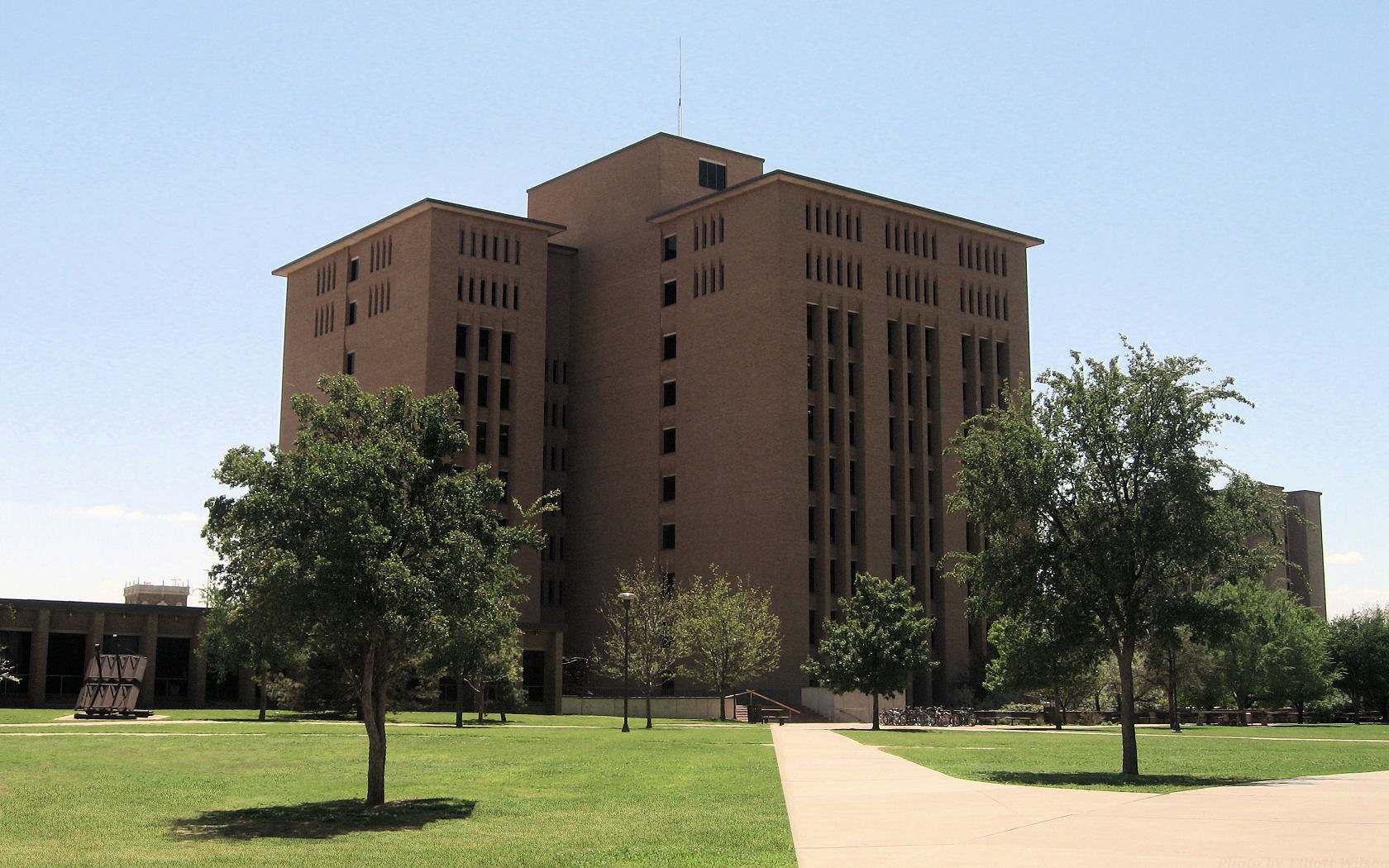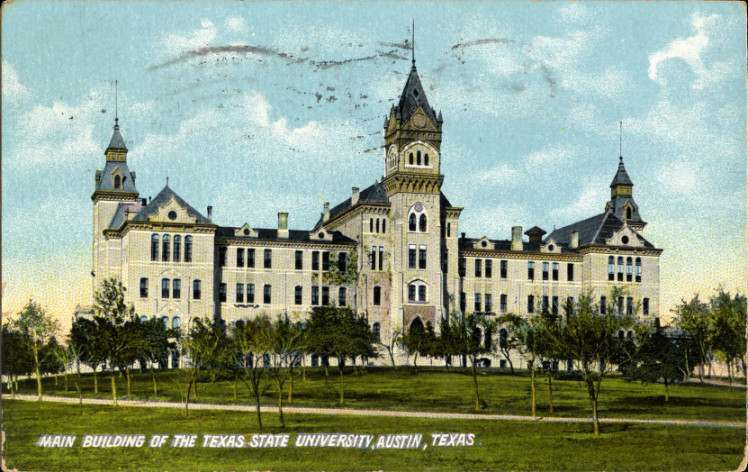Texas, a state known for its large size, is also a hub for some of the most prestigious higher education institutions in the United States. These big universities and colleges in Texas offer a wealth of knowledge, culture, and innovation. In this list of the biggest colleges and universities in Texas, we’ll explore the characteristics of these institutions, shedding light on what makes each of them unique and essential to the educational landscape of the Lone Star State.
1. Texas A&M University-College Station
- Undergraduate Format: Predominantly in-person, with some hybrid and online options.
- Avg. In-State Undergraduate Tuition & Fees: $12,153
- Avg. Out-of-State Undergraduate Tuition & Fees: $38,602
- Acceptance Rate: 63%
- Total Student Enrollment: 74,014
Texas A&M University-College Station, founded in 1876 as the state’s first public institution of higher learning, is the largest university in Texas. It’s known for its strong tradition in engineering, agriculture, and the military sciences, reflecting its historical roots. The university also has a significant commitment to research, classified among “R1: Doctoral Universities – Very high research activity”.
Texas A&M has a diverse student body, with programs across 18 colleges. The university is notable for its unique traditions like the Corps of Cadets and Midnight Yell, which foster a strong sense of community.
Notable alumni from Texas A&M include political figures like Rick Perry, former Governor of Texas and U.S. Secretary of Energy, and business leaders like Lowry Mays, founder of Clear Channel Communications.
2. The University of Texas at Austin
- Undergraduate Format: Primarily in-person, with online and hybrid courses.
- Avg. In-State Undergraduate Tuition & Fees: Approximately $11,698
- Avg. Out-of-State Undergraduate Tuition & Fees: Approximately $41,070
- Acceptance Rate: 31%
- Total Student Enrollment: 52,384
Founded in 1883, The University of Texas at Austin (UT Austin) has grown into one of the leading public research universities in the United States, often regarded as a “Public Ivy.” The campus extends over 431 acres in the heart of Austin, Texas, and is the flagship institution of the University of Texas System.
UT Austin is recognized for its significant research contributions, with an endowment of $18.80 billion as of 2023. The university boasts a rich academic history and has established itself as a center for educational excellence in various fields, including law, architecture, film, engineering, and business. UT Austin’s research endeavors are particularly impressive, with annual research expenditures totaling $1.06 billion for fiscal year 2023.
The university’s athletic teams, known as the Texas Longhorns, have a distinguished reputation, especially in football, baseball, and men’s swimming and diving. Notable alumni of UT Austin include 13 Nobel Prize winners, over 25 Pulitzer Prize winners, and recipients of other prestigious awards like Turing Awards and Fields Medals.
UT Austin is also known for its expansive resources, including seven museums and seventeen libraries, such as the Lyndon B. Johnson Presidential Library and the Blanton Museum of Art. Furthermore, it operates several auxiliary research facilities like the J. J. Pickle Research Campus and the McDonald Observatory.
3. University of Houston
- Undergraduate Format: Mostly in-person, with some online and hybrid courses.
- Avg. In-State Undergraduate Tuition & Fees: $9,457
- Avg. Out-of-State Undergraduate Tuition & Fees: $22,432
- Acceptance Rate: 65%
- Total Student Enrollment: 47,090
The University of Houston, established in 1927, has grown into a major public research university. It offers a wide range of undergraduate and graduate programs, including notable strengths in business, engineering, and law. The campus spread over 667 acres, provides a vibrant environment for its diverse student body.
UH is known for its dynamic campus life, with unique traditions like the Frontier Fiesta and the Cougar Red Friday. The university also emphasizes community engagement and research, with a strong intellectual property portfolio. Notable alumni include distinguished leaders in various sectors.
UH’s campus life is rich with traditions like Frontier Fiesta and Cougar Red Friday, promoting a vibrant community spirit. The university is committed to research and community service. Notable alumni include entrepreneurs like Liliane Bettencourt, one of the principal shareholders of L’Oréal, and acclaimed athletes like Elvin Hayes, a renowned NBA Hall of Famer.
4. University of North Texas
- Undergraduate Format: Primarily in-person, with hybrid and online courses available.
- Avg. In-State Undergraduate Tuition & Fees: About $11,090
- Avg. Out-of-State Undergraduate Tuition & Fees: About $23,490
- Acceptance Rate: 74%
- Total Student Enrollment: 46,940 (Fall 2023)
The University of North Texas (UNT), located in Denton, a suburb of the Dallas-Fort Worth metroplex, began as a teacher training institution in 1890 and has evolved into a large, comprehensive university. UNT’s main campus covers 1,000 acres and includes a satellite campus in Frisco. As an emerging research university, UNT offers a wide range of programs, including 114 bachelor’s, 97 master’s, and 39 doctoral degrees, spanning diverse fields such as music, business, education, and engineering.
Notable programs at UNT include a highly regarded jazz studies program. The university has earned recognition as both a Hispanic-Serving Institution (HSI) and a Minority-Serving Institution (MSI).
Some of UNT’s notable alumni are Larry McMurtry, Pulitzer Prize-winning author of “Lonesome Dove,” and Rick Riordan, author of the “Percy Jackson & the Olympians” series. This diverse alumni base illustrates the university’s broad impact across various fields.
5. University of Texas at Arlington
- Undergraduate Format: Primarily in-person with online and hybrid options.
- Avg. In-State Undergraduate Tuition & Fees: Approximately $11,040
- Avg. Out-of-State Undergraduate Tuition & Fees: Approximately $28,129
- Acceptance Rate: 83%
- Total Student Enrollment: Approximately 41,000
The University of Texas at Arlington (UTA) began as Arlington College in 1895, evolving from a private school to a notable public research institution. Joining the University of Texas System in 1965, UTA has grown into a large university offering more than 180 degree programs across various colleges. The campus spans 420 acres in the bustling Dallas-Fort Worth Metroplex, fostering a vibrant and diverse student life.
UTA stands out for its emphasis on real-world experiences through academic, internship, and research programs. The university is known for its innovative approach to education and boasts a diverse student body from over 100 countries. UTA’s sports teams compete in NCAA Division I, and its Movin’ Mavs wheelchair basketball teams have won 12 national titles.
Notable aspects of UTA include its focus on academic excellence and contribution to the community. The university actively engages in research and innovation, making significant strides in various fields. The diverse campus population contributes to a rich educational environment where students can thrive and prepare for global careers.
6. Texas Tech University
- Undergraduate Format: Predominantly in-person, supplemented by online and hybrid courses.
- Avg. In-State Undergraduate Tuition & Fees: Approximately $11,320
- Avg. Out-of-State Undergraduate Tuition & Fees: Approximately $23,770
- Acceptance Rate: 69%
- Total Student Enrollment: Over 40,000
Founded in 1923 as Texas Technological College, Texas Tech University in Lubbock, Texas, started with just six buildings and an initial enrollment of 914 students. Today, it has evolved into a major public research university with a diverse range of programs, encompassing fields from engineering and agriculture to the liberal arts.
Texas Tech is well-known for its vibrant campus life and robust athletic programs. As a member of the Big 12 Conference, the Red Raiders football team has a rich history with 40 bowl appearances, while the men’s basketball team has made 14 NCAA Tournament appearances. The Lady Raiders basketball team notably won the 1993 NCAA Tournament. The university’s Goin’ Band from Raiderland received the Sudler Trophy, highlighting its excellence in marching band performance.
Academically, Texas Tech offers a wide array of undergraduate, master’s, and doctoral programs, with more than 100 programs each at the master’s and doctoral levels. Notable areas of study include agriculture, engineering, and interdisciplinary study of arid and semiarid environments through the International Center for Arid and Semiarid Land Studies.
7. Texas State University
- Undergraduate Format: Mainly in-person, with some online and hybrid options.
- Avg. In-State Undergraduate Tuition & Fees: Approximately $10,280
- Avg. Out-of-State Undergraduate Tuition & Fees: Approximately $22,397
- Acceptance Rate: 81%
- Total Student Enrollment: Over 38,000
Founded in 1899, Texas State University, originally known as Southwest Texas State Normal School, has a rich history intertwined with the development of the region. It was established with the intention of training teachers. Today, it stands as a comprehensive public research university located in San Marcos, Texas, with a satellite campus in Round Rock.
The main campus covers 507 acres along the San Marcos River and houses 245 buildings. Notable is the Forensic Anthropology Center at Texas State, recognized as the largest forensics research facility globally. Texas State University’s sports teams, the Bobcats, compete in the NCAA Division I Sun Belt Conference.
Texas State University is distinguished for being the only university in Texas to have a U.S. President as an alumnus, Lyndon B. Johnson, who graduated in 1930. The university has expanded significantly since its inception, now offering over 200 bachelor’s, master’s, and doctoral degree programs across diverse fields. The university emphasizes hands-on research and innovation, fostering a new generation of leaders and innovators.
8. University of Texas at San Antonio
- Undergraduate Format: Mainly in-person, with a variety of online and hybrid courses.
- Avg. In-State Undergraduate Tuition & Fees: Approximately $10,691
- Avg. Out-of-State Undergraduate Tuition & Fees: Approximately $26,298
- Acceptance Rate: 79%
- Total Student Enrollment: Over 34,000
Founded in 1969, the University of Texas at San Antonio (UTSA) was established to address the need for a public four-year higher education institution in San Antonio. The university has grown significantly, becoming the third-largest institution within the University of Texas System by enrollment. UTSA is classified among “R1: Doctoral Universities – Very High Research Activity” and offers over 170 degree programs.
UTSA’s economic impact is substantial, with $1.2 billion locally and $2.9 billion nationwide through its Institute for Economic Development. The university’s research expenditures totaled $141.7 million in FY22, indicating its robust commitment to research and innovation.
Student-athletes at UTSA, known as the Roadrunners, compete in The American Athletic Conference. The football team, established in 2009, has participated in various conferences, reflecting the university’s dynamic growth in athletics.
Notable early faculty at UTSA included diverse and distinguished individuals such as Tomás Rivera, a Chicano author, and educator; Jacinto Quirarte, a pioneering art historian; Álbar Peña, a founder of the National Association for Bilingual Education; and Richard Adams, an archaeologist specializing in Mesoamerican and Mayan civilizations.
9. University of Texas at Dallas
- Undergraduate Format: Primarily in-person with options for online and hybrid courses.
- Avg. In-State Undergraduate Tuition & Fees: Approximately $13,442
- Avg. Out-of-State Undergraduate Tuition & Fees: Approximately $38,168
- Acceptance Rate: 79%
- Total Student Enrollment: Over 30,000
The University of Texas at Dallas (UT Dallas), founded in 1961, began as a private research arm of Texas Instruments and later transformed into a public university. It became part of the University of Texas System in 1969. Initially a graduate-only institution, it has grown into a comprehensive university offering a broad range of undergraduate and graduate programs. The university is particularly noted for its strong emphasis on science, engineering, and business education.
UT Dallas has made a significant impact on the local economy, contributing to the growth of the Dallas-Fort Worth area, particularly in the fields of engineering and physical sciences. It has a sprawling campus with state-of-the-art facilities that promote innovative learning and research.
The university is known for its vibrant campus life, with various academic resources, events, and activities. It aims to prepare graduates for leadership roles in various sectors, equipping them with the necessary tools to excel in the global community. UT Dallas also offers education abroad programs, allowing students to gain international experiences and broaden their perspectives.
10. University of Texas Rio Grande Valley
- Undergraduate Format: Primarily in-person, with options for online and hybrid courses.
- Avg. In-State Undergraduate Tuition & Fees: Approximately $8,132
- Avg. Out-of-State Undergraduate Tuition & Fees: Approximately $18,260
- Acceptance Rate: 80%
- Total Student Enrollment: Over 31,000
The University of Texas Rio Grande Valley (UTRGV) was established in 2013, merging the University of Texas-Pan American and the University of Texas at Brownsville/Texas Southmost College. UTRGV, with its main campus in Edinburg and a significant presence in Brownsville, offers an expansive range of academic programs across multiple campuses.
UTRGV provides a wide array of bachelor’s, master’s, and doctoral programs, with a particular emphasis on serving the educational needs of the region’s Hispanic community. Notably, the university houses the School of Medicine. The university is also distinguished for its contributions to business, engineering, and computer science education.
The university’s athletic teams, known as the Vaqueros, compete in Division I, with most athletic facilities located in Edinburg. The institution places a strong emphasis on supporting a vibrant student life, including on-campus housing options and a range of student activities and services.










